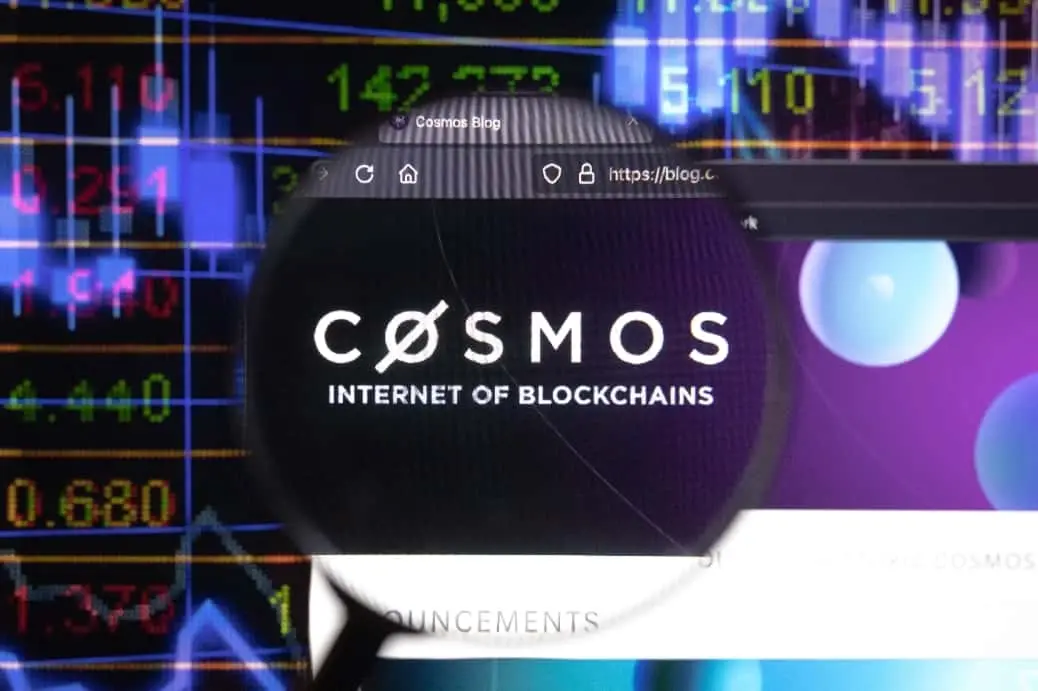Foresight Ventures: Comprehensive Interpretation of L1 Public Chain Linera
Written by: maggie
Summary
The competition in the public blockchain space is fierce, with new funding and teams continuously entering the field. Current development directions include: Level 2 solutions based on Ethereum such as Optimistic and Arbitrum; the rise of high-performance Level 1 chains represented by Aptos and Sui, which are based on the Move language; and block-oriented solutions like Celestia.
Linera is a Level 1 chain that aims to provide a secure, highly scalable, low-latency blockchain to offer faster response times for Web3 applications, narrowing the gap between centralized and decentralized applications. The founding team comes from Meta (Facebook) and previously participated in the development of the Diem blockchain, possessing strong R&D capabilities, but the background and number of technical team members are significantly less than those of the Sui and Aptos projects. In June 2022, it secured a total of $600 million in seed funding from investors including A16Z.
Technically, Linera's main features are:
1) Multi-chain structure (referred to by Linera as microchains / integrated multi-chain), which processes transactions across multiple parallel chains to improve processing capacity and block generation speed. It claims to be better than mainstream scaling technologies (faster than single chains, more convenient for cross-chain than sharding, and can resolve disputes faster than Rollups).
2) Elastic validators, which allow validators to assign different microchain sets to different Workers for processing, enabling horizontal scaling of Worker machines to handle increased system load.
3) Smart contracts are written in Rust, drawing inspiration from the resource-based Move language, providing a more secure and composable blockchain programming language. Move also uses Rust syntax; Linera only states it draws from the Move language, which can be understood as a variant of Move.
4) Utilizes a DPoS+BFT consensus algorithm, where DPoS determines the voting weight of validators, and BFT is used for block validation. Linera's multi-chain structure and BFT consensus allow for one-click chain deployment, but single-chain performance may be average. The elastic validators can dynamically scale to achieve good response times, but the degree of centralization is relatively high, and the cross-chain solutions are not fully developed.
In terms of development stage, the project currently has a white paper, no RoadMap, no GitHub repository, and product modules have not yet appeared; the project ecosystem has not yet started and is in a very early stage of construction. Influenced by Meta's residual impact and stimulated by Aptos and Sui, Linera's attention is also increasing, with the Linera team releasing a white paper on December 19, 2022.
In terms of competitors, Linera is often discussed alongside Aptos and Sui, but its technical team size, background, and funding scale are far inferior to those of Aptos and Sui. All three teams come from the Diem and Novi platforms and have received investment from A16Z, but Linera's pace is relatively slow, and its seed round funding is far less than that of Aptos ($2 billion in seed funding) and Sui ($36 million). All three have adopted or drawn from the Move language in their technology. Architecturally, Linera is similar to Avalanche, utilizing a multi-chain structure, and all received $6 million in their first round of funding, with A16Z as an investor.
In summary, Linera still has many aspects that have not yet started, leading to strong uncertainty. The next step is to pay attention to the release of more information about its technical solutions and code, in order to assess its technical usability and user experience. Monitor the market's acceptance of single Owner chains / permissioned chains. The following step should focus on the construction of its nodes, the actual operation of the network, and the development of its ecosystem.
1. Basic Overview
1.1 Project Introduction
Linera is a Level 1 chain that aims to provide a secure, highly scalable, low-latency blockchain to offer faster response times for Web3 applications.
Facebook (later renamed Meta) once formed a team to develop the stablecoin project Libra (later renamed Diem), but due to regulatory issues, it ultimately could not continue. The team involved in Diem's development gradually became independent, establishing their own teams to develop new public chain projects, with Linera being one of them.
1.2 Basic Information
Founded around December 2021, the country/sector of the public chain token symbol has not yet issued tokens. It has raised a total of $600 million in funding from A16Z and other investment institutions.
1.3 Team
According to the official website and LinkedIn, the Linera team consists of about 8 members (compared to Aptos's 64 members and Sui's 93 members, the team size is small), and the website lists job openings for Rust engineers. The specific information about the members is as follows:



1.4 Funding
| Round | Amount | Valuation | Investment Time | Investors | Number of Investors | |-------|--------|-----------|----------------|-----------|---------------------| | Seed | $6 million | / | 2022.6.29 | Led by A16Z, with participation from Cygni Capital, Kima Ventures, Tribe Capital | 4 |
2. Technical Details
2.1 Vision and Technical Framework
Linera is a Level 1 chain that aims to provide a secure, highly scalable, low-latency blockchain to offer faster response times for Web3 applications, narrowing the gap between centralized and decentralized applications.
2.2 Technical Principles
1) An integrated multi-chain structure with elastic validators
Integrated multi-chain structure: Linera features multiple parallel chains (both active and inactive), referred to as microchains, with no limit on quantity.
Elastic validators: A validator acts as an elastic service similar to Web2, capable of parallel validation and execution of blocks across multiple chains, with each validator managing all microchains.
Validators are an elastic service in Web2: It can be understood that validators can increase or decrease the number of block validation and execution services as needed. For example, if there are 2 microchains in the network, a node can start 2 validation services and 2 execution services to process the blocks of both chains in parallel. Later, if 4 microchains appear in the network, the node can scale to 4 validation services and 4 execution services to process the blocks of 4 chains in parallel.
a. Creating microchains
Each chain has a unique ID, and the genesis file (configuration file) specifies several system microchains (for example, an Admin chain for managing validators). Users can and are encouraged to create their own new chains.
The chain's owner needs to perform a chain-creation operation to create a new microchain. The new chain ID = parent ID + chain-creation index.
For example:
The owner of chain ID 2 initiates a chain-creation operation, which is included in block B2_1.
The node executes the chain-creation operation, creating a new microchain with ID 2-1.

Three types of chains can be created. In the Linera blockchain, the proposal, validation, and execution of blocks are separated. Each validator validates and executes all microchains.
Single owner chain: Only the owner can propose blocks. The chain's owner is responsible for synchronizing blocks, proposing blocks, and collecting votes. If the chain owner does not work, the chain cannot be extended. The content on the chain is essentially dictated by the ChainOwner. Although the owner cannot alter past blocks, they can decide which transactions are included in blocks during packaging, which is overly centralized.
Permissioned chain: A group of people is allowed to propose blocks. Consortium chain. Similar to SubNets built by some project parties in Avalanche.
Public chain: Any user can propose operations, which are included in the next block by validators.
b. Elastic validators
The design of microchains allows Linera nodes to process transactions in parallel. Validators can horizontally scale Worker machines to handle increased traffic as system load increases.

Validators can create multiple Worker machines and assign different microchain sets to different Workers for processing. Clients communicate with each validator's load balancer, and the validator internally dispatches queries to the appropriate workers.
Workers within a single validator belong to a single entity, thus trusting each other. This enables fast and inexpensive communication between workers—and Linera's cross-chain requests.
As system load increases, Workers can be horizontally scaled, and validators only need to add worker machines to handle traffic.
c. Cross-chain communication
Cross-chain messaging allows applications to asynchronously transfer arbitrary data from one chain to another.
The local instance of the application maintains an inbox for each source it communicates with. When an application wants to send a message to a destination, it returns a value containing the message so that the runtime can execute the appropriate cross-chain request.
There is no guarantee that the message will be received by the recipient. The current implementation enforces sequential selection of messages. This strategy will be improved in the future, especially for public chains. This cross-chain design is less secure on public chains.
In addition to one-to-one communication, Linera also supports one-to-many communication using channels—Pub/sub channels.

2) Contract language: Inspired by Move's Rust language
Linera will initially use Rust as the target language for smart contracts. Rust smart contracts are compiled into Wasm bytecode and deployed on the chain. Nodes execute the Wasm bytecode contracts.

Applications on different microchains can share the same contract code but use different data. For example, two different ERC20 tokens on two microchains can use the same contract code with different contract data (name, supply, balance, etc.).
3) DPoS + BFT consensus mechanism
In the Linera blockchain, the proposal, validation, and execution of blocks are separated, with each validator managing all microchains. It employs the DPoS algorithm to determine the voting weight of validators, and validators run the BFT algorithm to reach consensus on blocks.
The consensus process for a single owner chain is as follows:

Step 0: Synchronize chain data between the ChainOwner and validators.
Step 1: The ChainOwner packages and proposes a block.
Step 2: Validators validate the block and vote on legitimate blocks. The voting weight of validators is determined by the DPoS algorithm, which relates the voting weight of the validator to their Stake and the Stake delegated to them.
Step 3: Validators send their votes to the ChainOwner.
Step 4: Once the ChainOwner collects votes amounting to 2/3 of the total weight, it creates a certificate from the voting information and sends it to the validators.
Step 5: Validators execute the block.
Additionally, the consensus process for multi-owner chains uses a simplified version of BFT, while public chains use a full version of BFT.
2.3 Technical Summary
1) Multi-chain structure allows for one-click chain deployment. However, single-chain performance may not match that of Aptos and Sui. The more microchains created, the higher the degree of parallelism and total throughput, but chains need to communicate through cross-chain messaging.
2) Dynamic scalability allows for clustering of nodes to achieve good response times. The design of elastic validators enables nodes to cluster and dynamically scale Worker machines to handle increased traffic. This is a great feature, but it also means higher node costs.
3) High degree of centralization. The proposal rights of blocks in single owner chains and permissioned chains are relatively centralized in one or a few individuals.
4) Cross-chain solutions are not fully developed. There is limited information disclosed about the cross-chain aspects, and this cross-chain solution relies on forced sequential selection of messages, which is difficult to verify in public chains and is not secure. The proposal also mentions that this solution will be improved in the future.
3. Token Economic Model
Not yet released.
4. Competitor Technical Comparison
4.1 Industry Overview
Linera belongs to the public chain sector.
The main trends in the public chain space currently include:
Ethereum Level 2: With the successful upgrade of Ethereum 2.0 to PoS, Layer 2 is coming to the forefront, and the TVL of Arb and Op is steadily climbing. ZK has become a prominent topic, and competition in ZK rollups is intensifying.
High-performance single shard chains: The rise of high-valuation, high-performance single shard chains like Aptos and Sui, with the successful launch of the Move language.
Modular and specialized chains: Celestia has popularized the concept of modularity, and the privacy public chain Aleo has secured $228 million in strategic financing.
4.2 Competitor Comparison
Linera is a shared chain of the Move ecosystem, with competitors including Aptos and Sui. Architecturally, Linera employs a multi-chain structure, similar to Avalanche, with the capability for one-click chain deployment.
1) Team Funding
Public chain team funding scale: Linera's founder, Mathieu Baudet, is a software engineer at Facebook and a blockchain researcher for Libra/Novi. According to the official website, the team consists of 8 members. In June 2022, it secured a total of $600 million in seed funding from investors including A16Z. Aptos co-founder and CTO Avery Ching served as a chief software engineer at Facebook from September 2011 to December 2021 for over 10 years and was the technical lead for the Novi team under Meta. The team has a total of 64 employees.
In March and July 2022, Aptos Labs raised over $350 million in two rounds of funding, led by well-known institutions A16Z, FTX Ventures, and Jump Crypto. Sui's development team comes from Mysten Labs, with CEO Evan Cheng serving as the Director of Blockchain Engineering at Meta from 2018 to September 2021. The team has a total of 93 employees.
In December 2021 and August 2022, Mysten Labs raised two rounds of funding totaling $336 million, led by A16Z and FTX Ventures, with participation from Jump Crypto, A&T Capital, Binance Labs, and others. Avalanche's Ava Labs is the founding team behind Avalanche, co-founded by Cornell University computer scientist and professor Emin Gün Sirer along with two PhD students, Ted Yin and Kevin Sekniqi, in 2018.
The team has years of experience and expertise in distributed systems consensus protocols. In February 2019, they completed a $6 million Series A funding round, with investors including A16Z and Polychain. In May and July 2020, they completed public offerings of $12 million and $42 million, respectively, raising a total of approximately $60 million in public offerings.
From the perspective of the technical leads' backgrounds and team sizes, Sui and Aptos are both strong, while Linera is relatively weaker.
2) Technical Comparison
Linera currently has limited publicly available detailed information, mainly consisting of conceptual statements, making it impossible to compare operational data such as TPS. It has not yet built an ecosystem, so comparisons cannot be made in that regard. Evaluations can only be made based on the existing disclosed solutions.
In terms of consensus algorithms:

It is evident that PoS+BFT has become the mainstream algorithm for public chains today.
In terms of blockchain architecture:

In terms of smart contracts:

Conclusion
The Linera project is still in its early stages, currently only having a white paper that introduces concepts, with no code or ecosystem yet. It shares similarities with Aptos, Sui, and Avalanche.
Technically, it employs a multi-chain architecture that allows for one-click chain deployment. It can dynamically scale and cluster nodes to provide good response times. However, its single owner chains and permissioned chains lack decentralization. The cross-chain solutions are not fully developed.
In summary, Linera still has many aspects that have not yet started, leading to strong uncertainty. The next step is to pay attention to the release of more information about its technical solutions and code, in order to assess its technical usability and user experience. Monitor the market's acceptance of single owner chains / permissioned chains.
Reference documents:
Linera Official Website: http://linera.io/
Linera White Paper: https://linera.io/whitepaper










